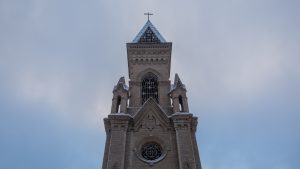SAMARKAND, UZBEKISTAN — The 2,000-year old city of Samarkand lies some 2,000 miles away from Kyiv, separated by Central Asians deserts, the Caucasus mountains, and the Caspian sea.
The city hasn’t seen warfare since the Russian Civil War. The residents live calm lives in the shadow of centuries-old Timurid madrasas and mosques.
Yet the echoes of modern war are heard even here, as an unusual diaspora makes the city home.
“They’re nice kids,” Padre Paolo told The Diplomat in accented Russian. “Some need to be taught manners but they’re all good kids.”
An affable Argentinian Catholic priest is an unexpected sight in the historically Muslim Samarkand, but his new congregation is even more unexpected — Indian medical students, evacuated from Ukraine in the aftermath of the full-scale invasion in late February 2022.
The Diplomat spoke with the Indian students, the Catholic priest, and others. Their stories show the multicultural face of Samarkand and illustrate Uzbekistan’s reformist drive.
Samarkand, once a major node of the Silk Road, is once again bringing together people from all over the world. The city now houses roughly 1,500 Indian students, 500 formerly enrolled at the Bukovinian State Medical University in Chernivtsi, Ukraine.
Thrown into a foreign city and culture after a traumatizing evacuation, some of those students found community and solace in St. John the Baptist’s church in Samarkand, run by a pair of Argentinian Catholic priests of the Order of the Incarnate Heart.
Samarkand’s tiny Catholic population is itself diasporic in character — most of them are descendants of Poles, Russians, and Ukrainians who found themselves in Uzbekistan at various points in time stretched across the Russian and Soviet empires. “We don’t have a single Uzbek in our congregation,” Padre Paolo told The Diplomat. The local congregation is tiny — some 20 people, per Padre Paolo. The newly arrived Indians outnumber the old congregation roughly 3 to 1.
Samarkand is an ancient city, most famous for its prominence during the Timurid Emirate — a large Sunni empire encompassing modern-day Iran and parts of Central Asia and Turkey throughout the 14th-16th centuries. Once an imperial capital called “protected by Allah,” for it was never conquered, Samarkand fell to the ever-expanding Russian empire in 1868.
Throughout the 19th century, the Russians brought with them a small contingent of Catholics — the Samarkand community was largely made up of Polish and German traders, officials and missionaries. By World War I, the Empire transferred numerous Austro-Hungarian Catholic prisoners of war from the muddy trenches of Eastern Europe to sunny Samarkand.

St. John the Baptist’s church in Samarkand is run by a pair of Argentinian Catholic priests of the Order of the Incarnate Heart. Photo by Dan Storyev.
The prisoners’ arrival came just in time, as the Russian administration and the local Catholics were looking for cheap workforce to build themselves a church, after years of administrative disputes. With the Catholic POWs’ help, the church was built by 1916, in the European quarter of the city. While most of Samarkand is built with Uzbek styles in mind, the European quarter was built by the Russian Empire from scratch, featuring a landscape akin to a town in Germany or Poland.
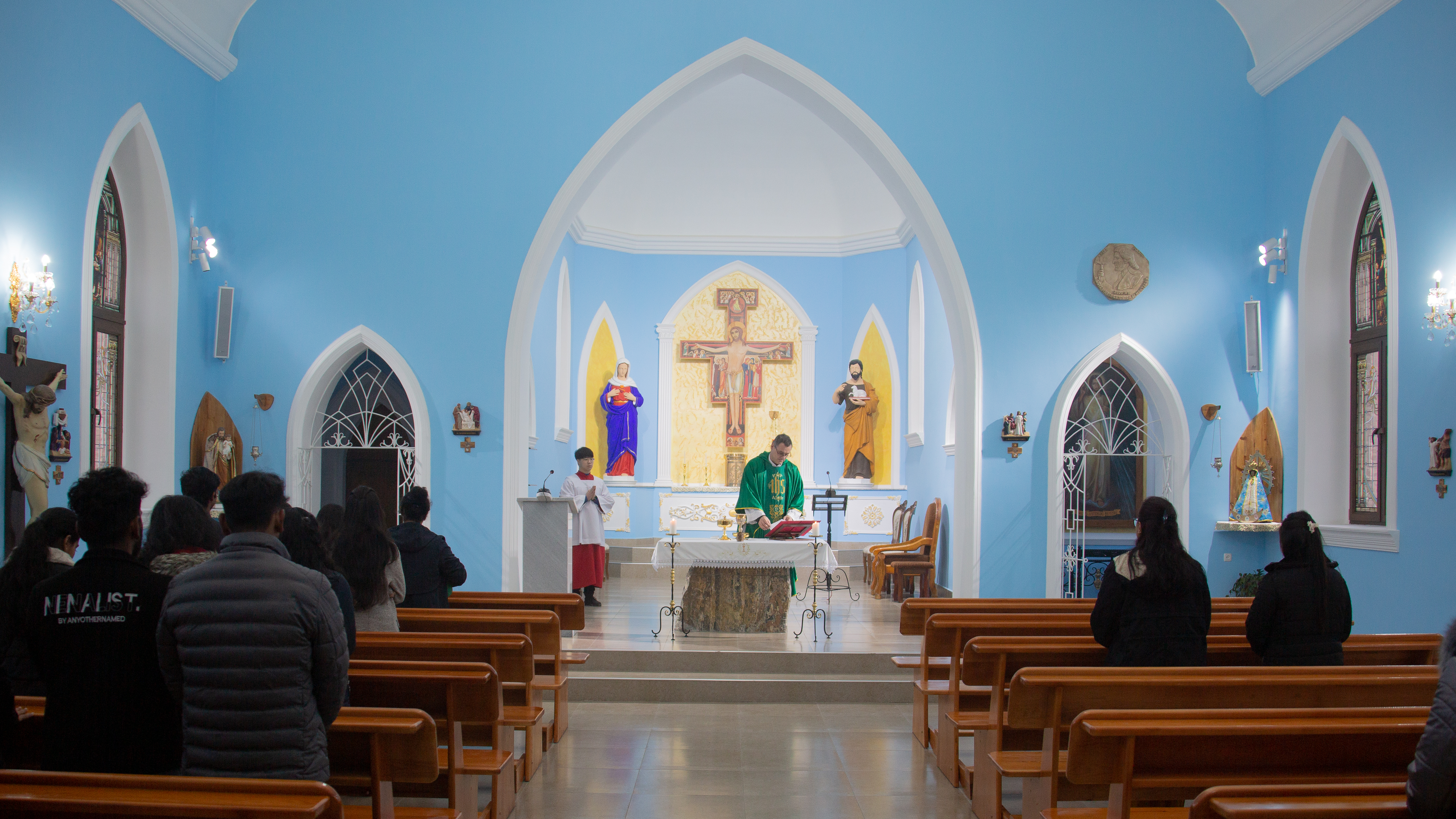
The church was built, in part, by Catholic POWs captured during the First World War and sent to Samarkand. Photo by Dan Storyev
A year after St John’s was erected, the Russian revolution ushered in a new government and a new ideology, one brutally intolerant of religion. Samarkand became a flashpoint of Soviet secularization policies, aimed mainly at the Muslim majority, but not sparing the Catholics either. The church was shut down in 1930, and a local school took over the building, as was the Bolshevik custom. During Stalin’s reign, Samarkand’s Catholic population received an influx of political exiles from Poland, Ukraine, and the Baltics — but the church wasn’t re-opened until the dissolution of the Soviet Union and Uzbekistan’s independence.
41-year-old Padre Paolo and his partner Padre Ariel were sent to Samarkand in 2021. They are Russian speakers, having learned the language over years of service in Russia. Padre Paolo served for five years in a provincial town near St. Petersburg and then another five years in Kazakhstan. “The bureaucracy helped me,” the priest said, smiling. “I would stand in lines for hours, I had to learn Russian!” He came to admire Russian culture and customs.
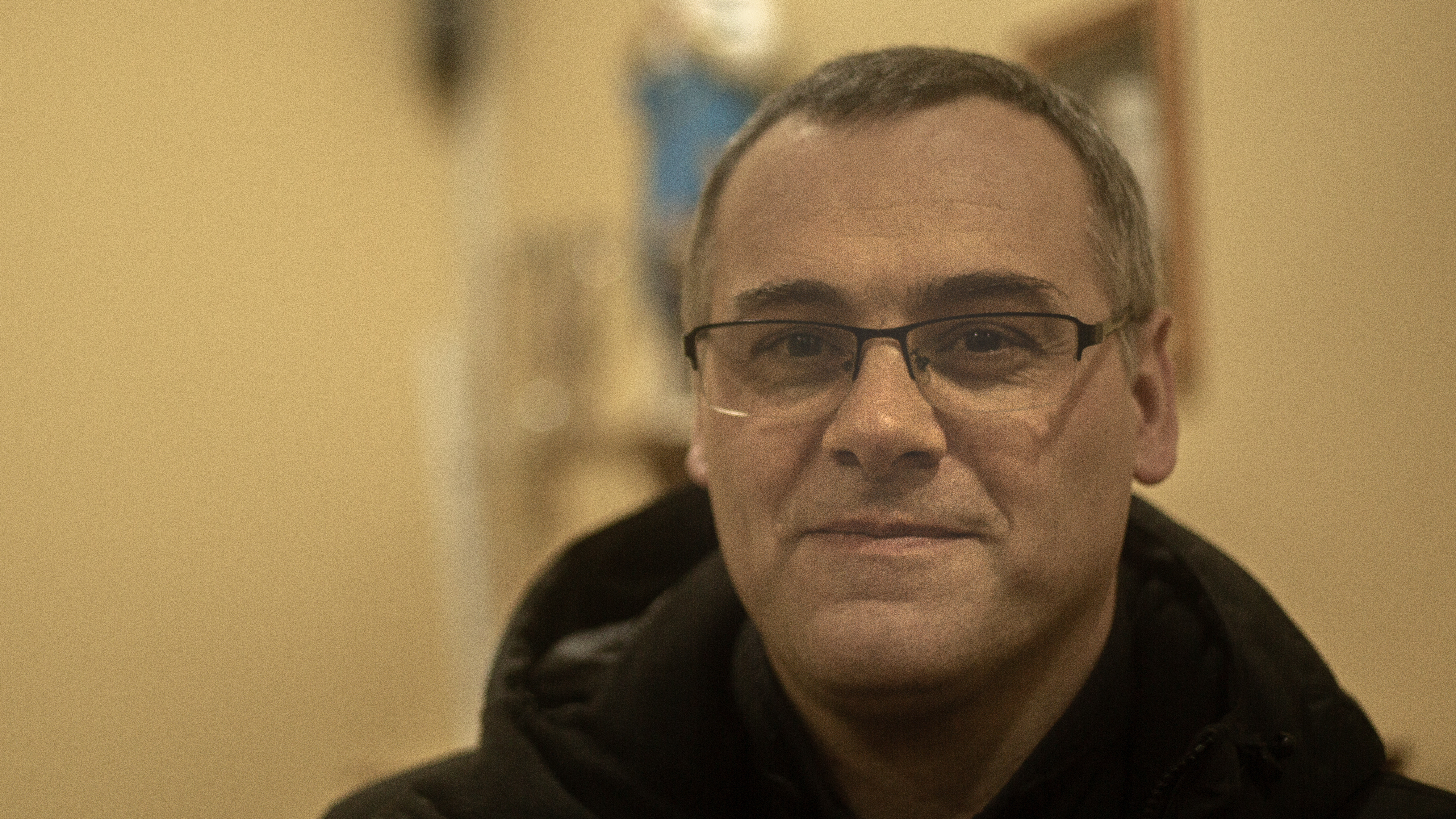
Padre Paolo was sent to Samarkand in 2021, with his partner Padre Ariel, after serving in Russia and Kazakhstan. Photo by Dan Storyev.
Padre Paolo still feels a powerful connection with Russia, but his “heart aches for Ukraine.” The priest has never visited the country, but he is fascinated with Ukrainian songs, which he heard sung by Ukrainian priests during his training in the Vatican.
When sent to Samarkand, the padres didn’t despair, as Padre Paolo said: “It is our duty, we go wherever we are sent.” Here the priests have well adapted to the local community, making friends and launching a Sunday school. He even plays soccer with the Sunday school’s pupils. “I am Argentinian. Football is in our blood” he proudly told The Diplomat, pointing to a pitch set up right at the churchyard.
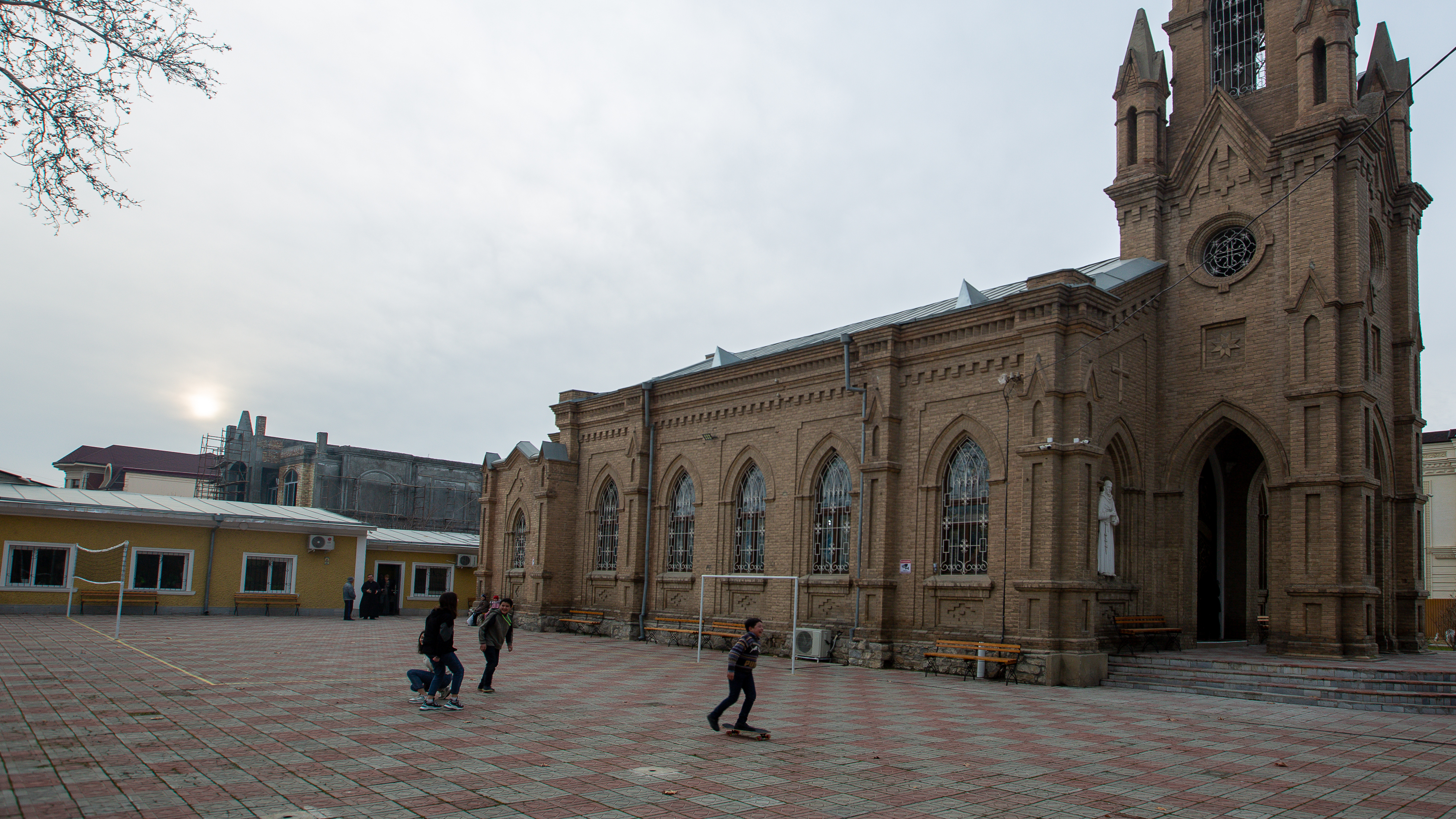
Children play in the churchyard. Photo by Dan Storyev.
Samarkand is not just ancient ruins and the best plov in the world. It is also a city whose institutions are striving to be dynamic and global. Sleek, European-style cafeterias are opening up and English is slowly becoming more common. Over the recent years, Uzbekistan has been undergoing a period of reform (some more successful than others), after the death of President Islam Karimov. The country remains authoritarian, yet it seems to aim at a Singaporean, rather than a Turkmen model of authoritarian rule, a model that allows for Western business to invest and for local institutions to operate within capitalism.
As Denise Waddingham, the director of the British Council in Tashkent put it to us: “the country sticks to its old traditions in many ways, but there is this incredible drive for reform, especially in education… Teachers no longer have to pick cotton for the state, they are teaching.”
The Diplomat also spoke to Niginakhon Saida, a professor at Webster University in Tashkent. Saida laid out the general directions of the education reforms. “Reforms in education can be divided into three [areas]. Reforms in admission exams; reforms in diversifying fields of studies and providing more opportunities (this is being done by launching more public universities as well as welcoming foreign universities and their branches in Uzbekistan; increasing admissions quotas; providing more opportunities for women, including scholarships, specific quotas); and reforms in improving quality of education.”
One of those modernizing institutions is the Samarkand State Medical University (SSMU), the only medical university in the country. The campus is a grand complex built in neoclassical style, chock full of diverse students. Samarkand is a diverse city — aside from foreign students, local students also have roots beyond Uzbekistan. “I’m Iranian-Uzbek, he’s Turk-Uzbek, he’s Greek, and that lad is Turkmen,” said Zhenya, a quick and smiley young resident.
The SSMU has only recently been granted a relative independence from governmental bodies, and it has been steadily establishing a foothold in the foreign student market, according to Zafar Aminov, the SSMU’s vice-rector for international cooperation.
Foreign students pay higher tuition rates, bringing in money and increasing Uzbekistan’s prestige in countries like China, South Korea, Pakistan, and India. The university even has students from the U.K. and Germany — mostly of Turkic ethnic background, according to Aminov. “We attract people on two levels. First, we have an ancient history of education, with our Islamic heritage, with our madrassas… And we are also a modern university that has recently been reformed and provides a high level of education.”
The Indian students we spoke to feel accepted in Samarkand. The city’s slower pace of life is an abrupt change from the more bustling Ukraine. “Back in Ukraine we had parties almost all the time,” said one of the group of students I spoke to at the church.
“Here the culture is a bit more conservative,” said Maria, a 22-year-old from the southern Indian state of Kerala. “But we don’t mind,” she continued. “It helps us focus on our studies.” Another student, next to her, added: “it’s fine, we make do with house parties. We drink vodka often.”
The students’ retreat from Ukraine was harrowing. They left only a couple of days after the invasion, many having to wait in line at the border for some 10 hours, in the freezing cold of a Ukrainian February. They then spent months in India where they took online classes. A few made the decision to return to the western Ukraine, which is now relatively safe, to continue their studies. But the majority decided to transfer to Samarkand for the sake of safety.
“There is no chance we are coming back to Ukraine,” Hari, a 23 year old Catholic, said. “Way too dangerous.”
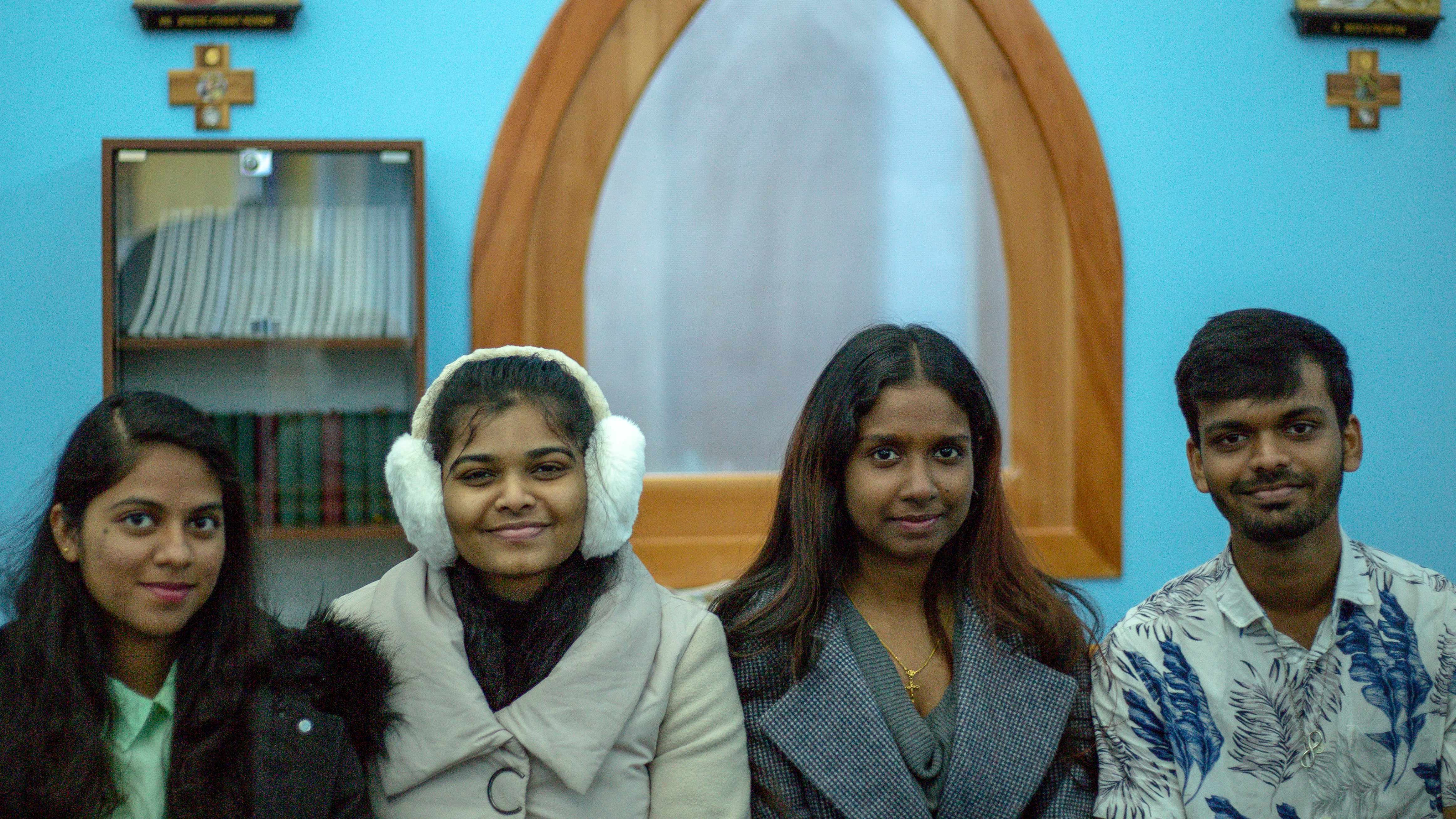
Hari with his friends at the church. Photo by Dan Storyev.
The MD House, the Indian agency arranging their transfer, organized a lavish greeting in collaboration with the SSMU. The Indians on campus enjoy an Indian cafeteria plus a plethora of Indian cultural events. Indian professors have even transferred to the university to teach them.
But, after talking with the Indian students, it became clear that many lacked an authentic community center within the ancient city. This is where the old Catholic church has stepped in, at least for some of them. In September a delegation of Catholic Indians approached the padres, asking them to conduct English mass.
The only issue is that Padre Paolo, who became the Indians’ key shepherd, barely speaks any English. “When I write my sermons I check them all night, I run them through Google Translate to listen to the sound.” Whenever possible, he switches to Russian or Spanish with a sigh of relief — but his determination to engage the newly-arrived English-speaking congregation is immense.
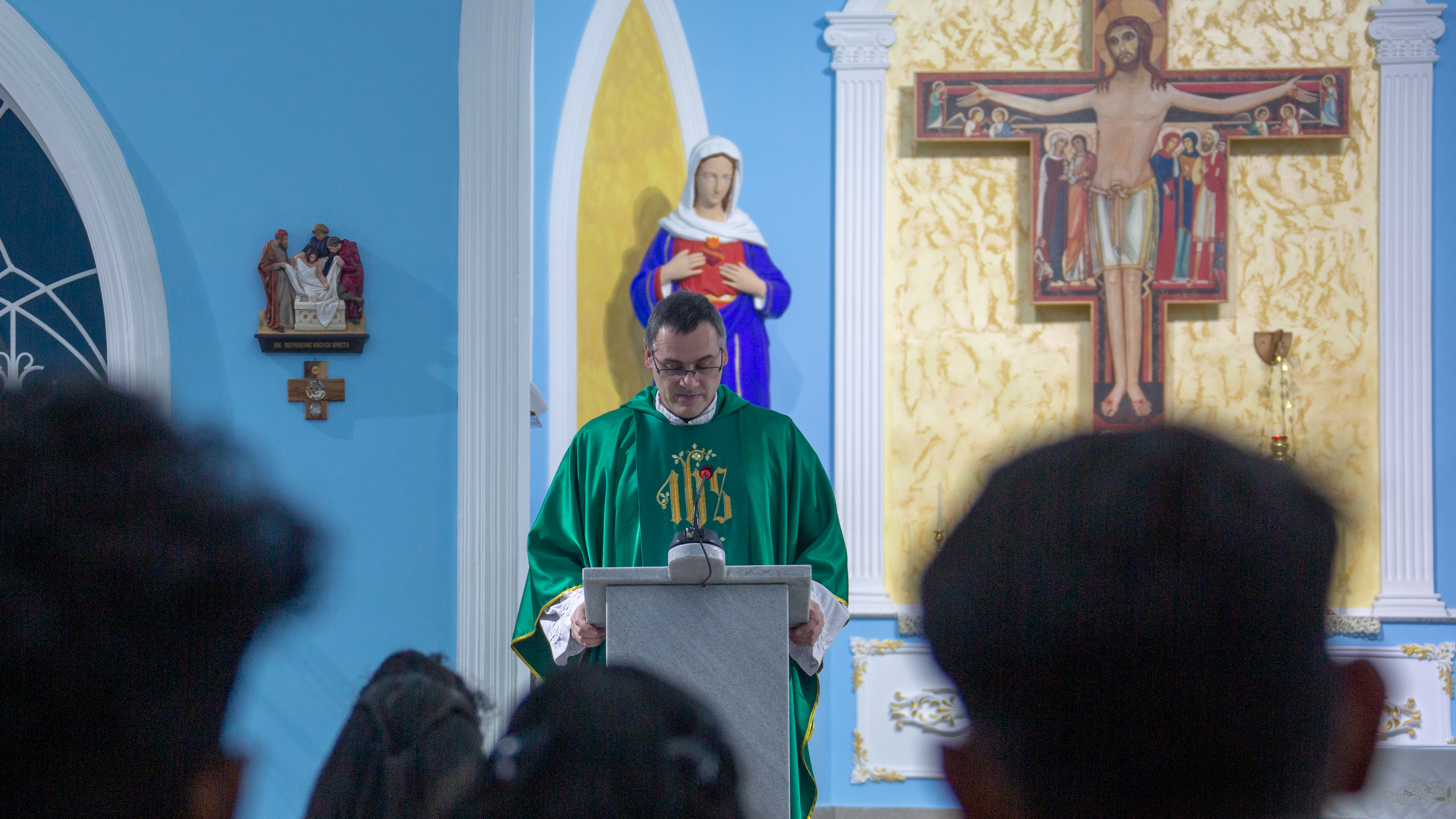
Reading an English sermon is a laborious task for Padre Paolo. Photo by Dan Storyev.
Padre Paolo’s sermons are what everyone would expect from a Catholic priest — teaching the values of modesty and traditional ways of life. The acoustics in the church are wanting and the combination of echoes and Argentinian accent makes the sermon almost incomprehensible at times.
But for the students, it is the thought that counts. A sizable portion of them aren’t even Catholic. They are Hindu, but come to the church to hang out with their friends, and sing songs.
“We go to malls and cafes after the mass, sometimes we stay over and Padre Paolo plays the guitar and I play my ukulele,” said Maria, the student from Kerala who enjoys making music in her spare time. She also plays the ukulele and sings in the three-person choir during the mass.
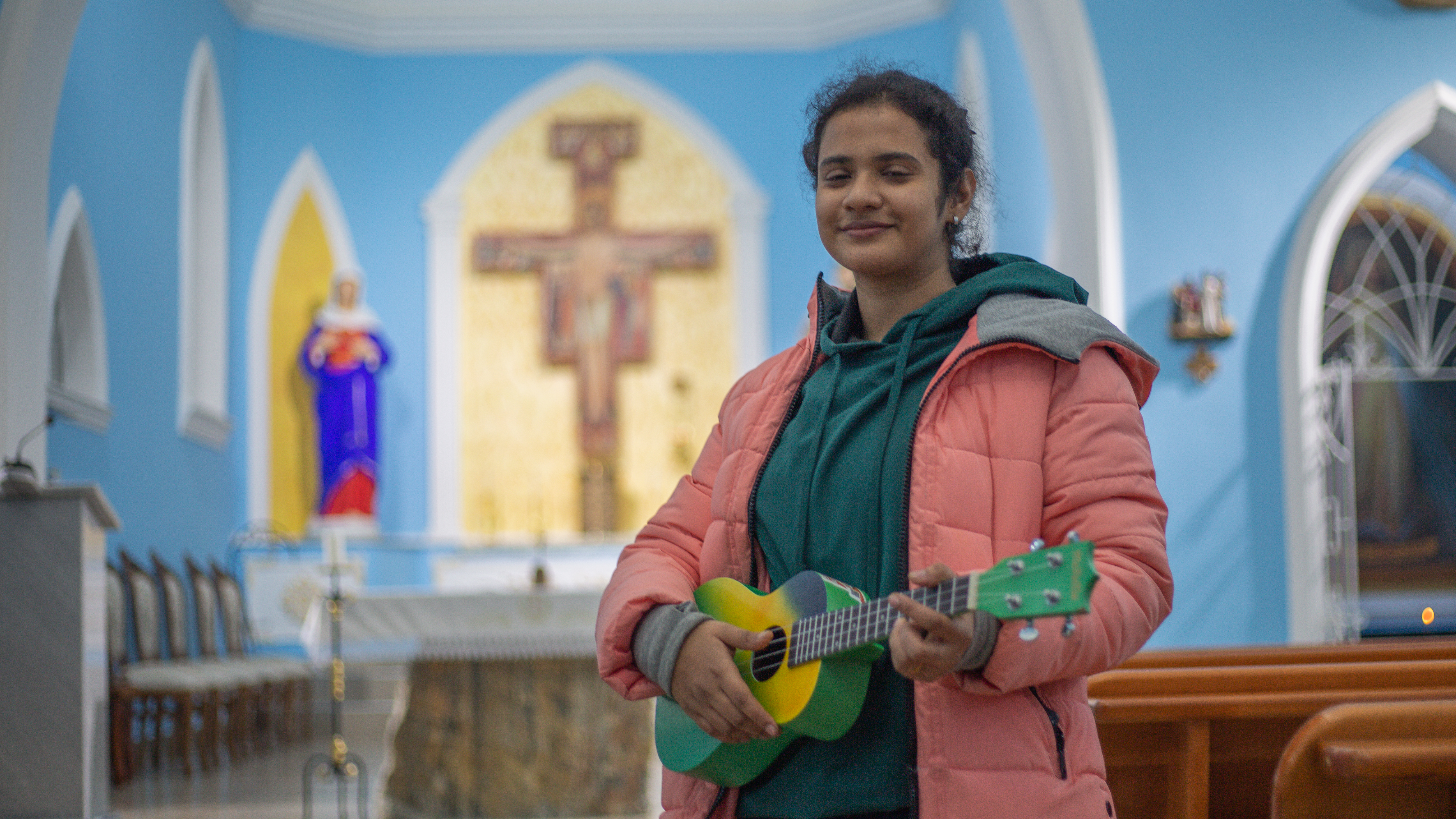
Maria and her ukulele. Photo by Dan Storyev.
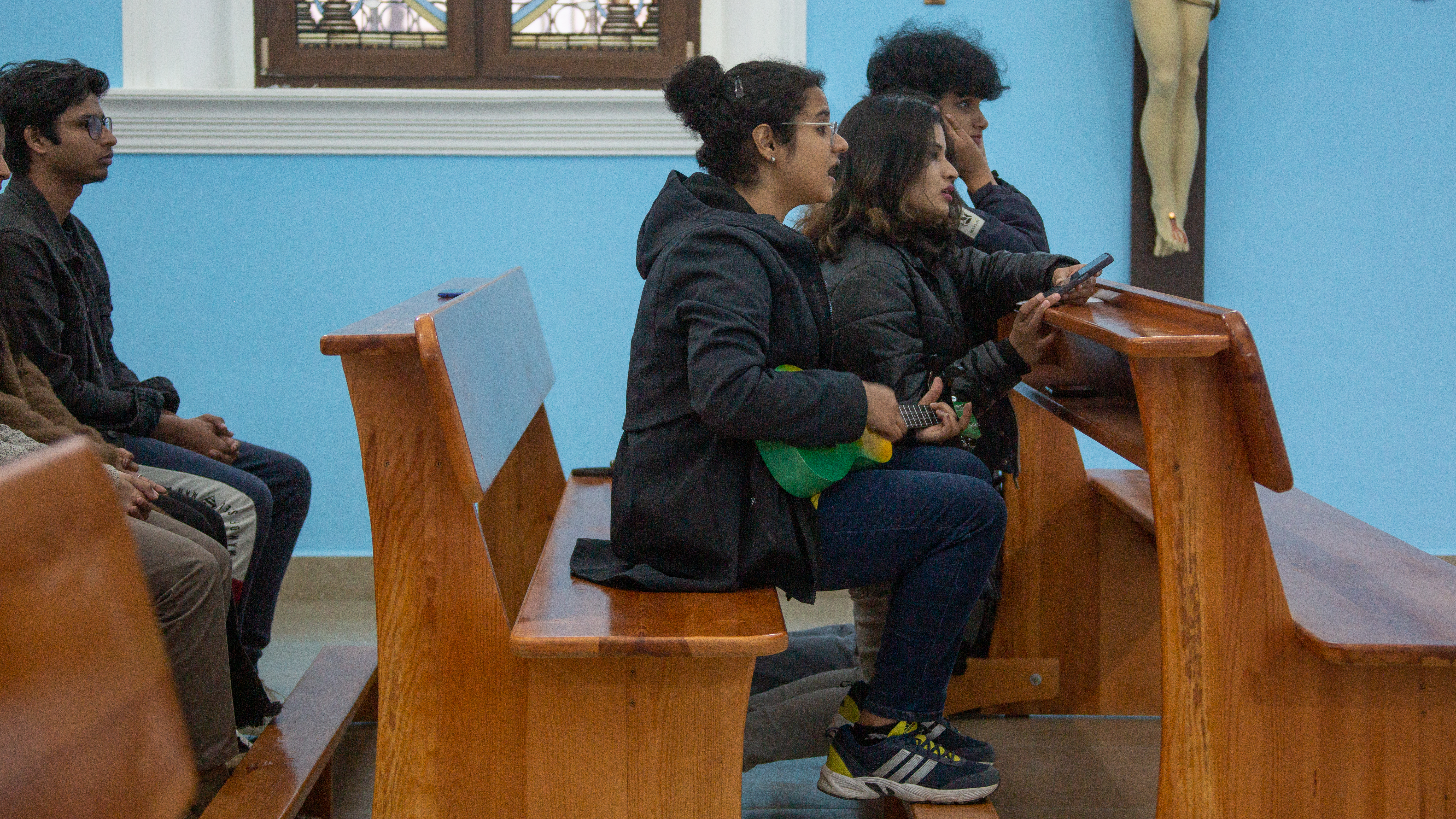
The impromptu choir in the pews. Photo by Dan Storyev.
The students miss Ukraine, but many note that Samarkand has been somewhat kinder to them. One student said she faced racism in Ukraine: “Every now and then you hear ‘go back where you came from’ from Ukrainians. People here are less racist and more welcoming.” Indeed, the worrying pattern of racism during and before evacuation of students of color from Ukraine has been extensively reported on.
But most students who spoke with The Diplomat recall Ukraine fondly. “Many people were kind to us, even the soldiers who helped during the evacuation.”
Still, many are already forgetting Ukraine. “We watched Ukraine news at first, but now it is becoming all too chaotic and serious. The war no longer impacts us,” several said.
As the unusual refugees of the Ukraine war line up to receive Holy Communion from Padre Paolo’s hands in an old church built by prisoners of war who fought over Ukraine a century ago, they are embracing Samarkand, becoming a part of the city’s diverse community of diasporas. They might be a temporary diaspora — none that The Diplomat spoke to plan to stay in Uzbekistan — but nevertheless, in the words of Zafar Aminov, “Samarkand is a welcoming city and they are our guests, of course they are welcome here. ”
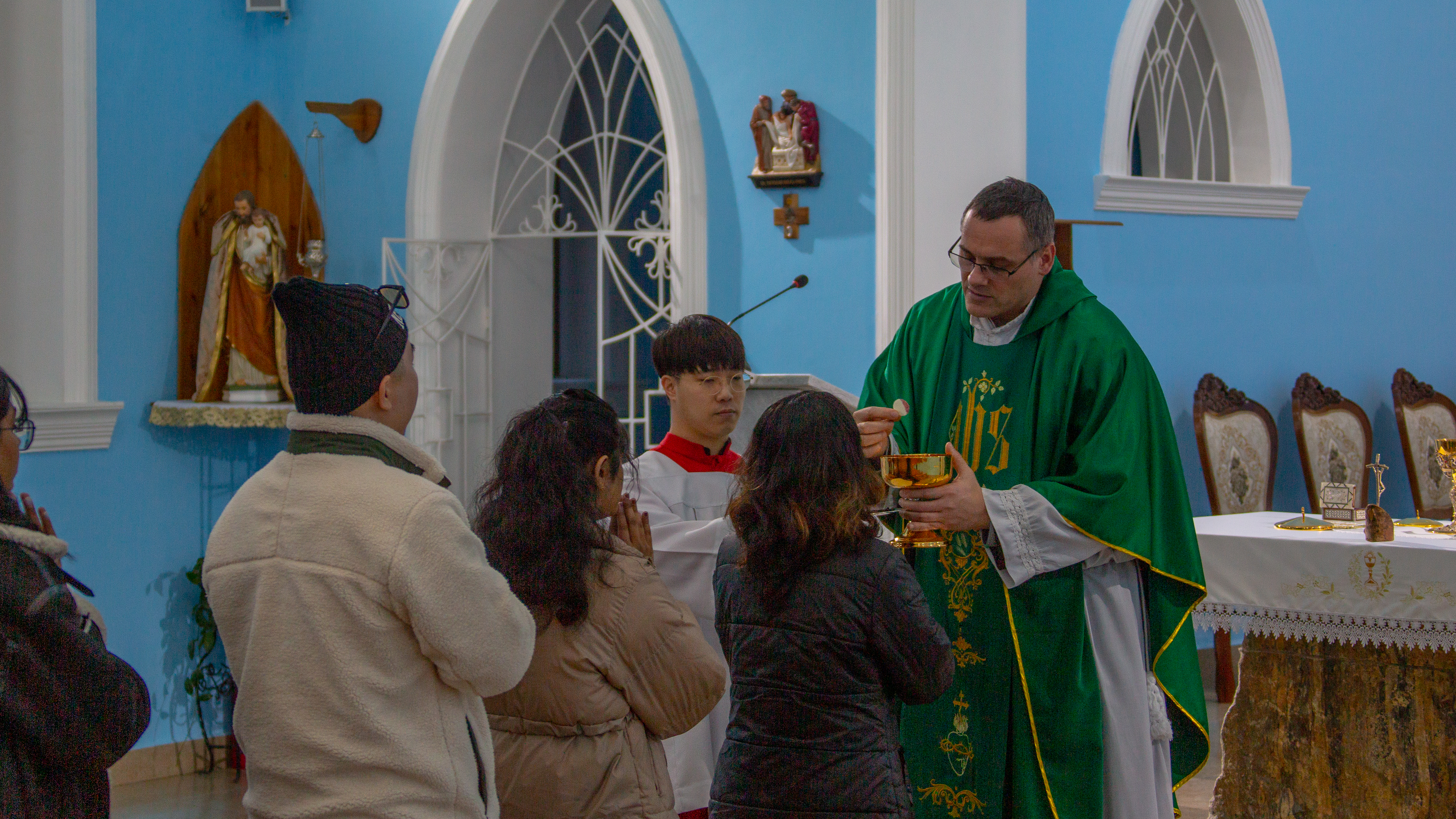
The Indian students displaced from Ukraine line up to receive Holy Communion with the other congregants at St. John the Baptist’s in Samarkand. Photo by Dan Storyev.













